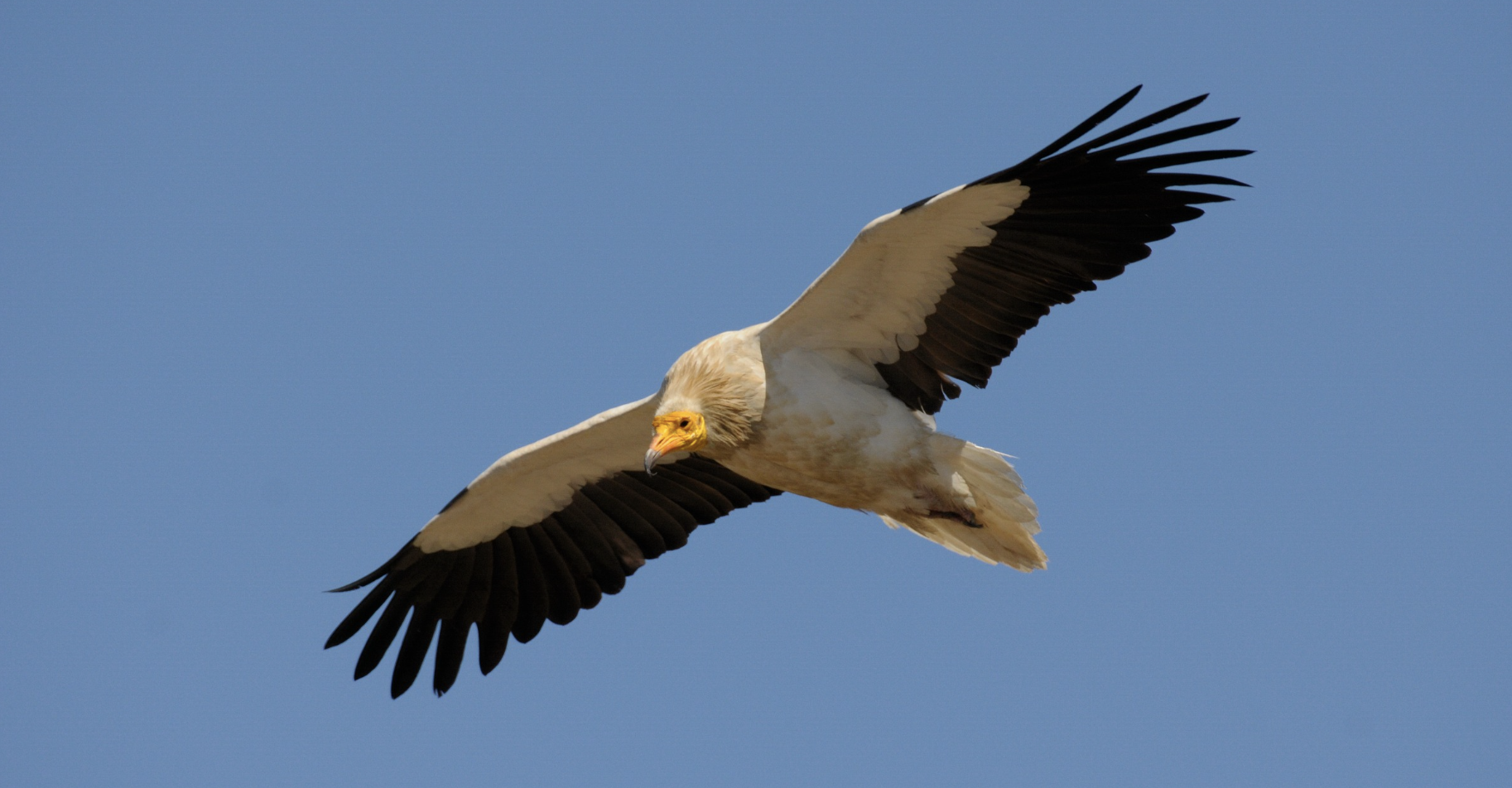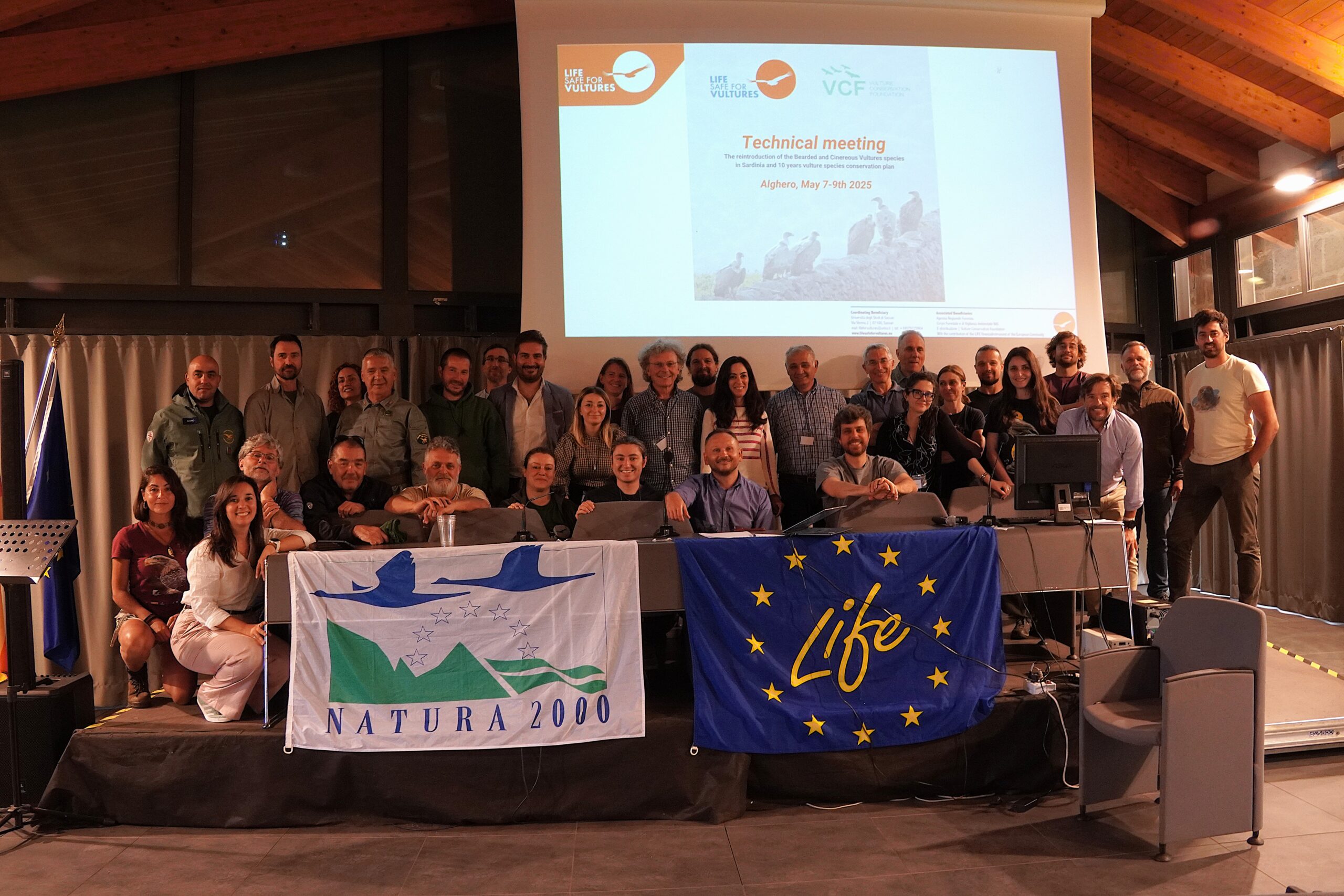
Back in 2016, Rupis was the first Egyptian vulture which was captured and tagged as part of the LIFE RUPIS project on Egyptian vultures breeding in the crags of the Douro Valley across Portugal and Spain. Since then we have been following his adventures from the summer breeding grounds in the Douro canyon to the wintering areas in sub-Saharan Africa, an epic round trip of over 7,000km. We have had several anxious periods too, as the transmitter that Rupis carries has stopped sending signals a few times, raising fears something may have happened to the bird.
Following Egyptian vultures
Weighing between 30 and 40 grams, GPS transmitters are fitted on the backs of vultures like Rupis to track their movements, without having any significant impact on the birds themselves. The highly efficient solar powered transmitters send their GPS position over the mobile communications network and can provide as many as 500 location-fixes per day. Each transmitter has a lifespan of three to four years . This data offers conservationists vital information about how the birds move around areas.
Radio silence
Rupis returned to the Douro Valley earlier in the summer but since May the LIFE Rupis team stopped receiving signals, which started to worry us. It does seem to be becoming a regular fixture, but with the signal of two of the five birds being tracked stopping, the team couldn’t help but be concerned. Signals from Bruçó ceased during his wintering period, in Africa, and Poiares fell silent after returning to the Douro at the end of winter.
This cease in transmissions could be due to a transmitter malfunction, it can happen when the vultures are in areas with no GSM coverage – areas where the transmitters have ‘no reception’ – or in the worst-case scenario, it could mean the birds have died.
Rupis returns
The team breathed a massive sigh of relief when a few weeks ago the transmitter fitted to Rupis saw dots on the map once again. They showed Rupis in Spain, near Villamor de Cadozos, having flown there from Arribes del Duero Natural Park.
“There’s always a certain apprehension when we stop receiving signals all of a sudden, and there’s no sign for several days; when we receive data again it’s always a huge relief,” says Life Rupis coordinator Joaquim Teodósio, from SPEA.
The LIFE Rupis team believes his occasional periods of ‘radio silence’ occur when he flies to the area north of Tabara, in Spain, where his transmitter has no reception. Fortunately, when transmissions resume, the transmitter sends information not only about where the vulture is at that moment, but also about the points it passed along the way. This means that when the transmitter reconnects, the team can reconstruct the bird’s route.
LIFE Rupis
The LIFE Rupis conservation project, led by Portuguese wildlife organisation Sociedade Portuguesa para o Estudo das Aves (SPEA), and funded by the EU LIFE Fund and the MAVA Foundation, is working in the cross-border Douro region of Spain and Portugal to protect and strengthen the populations of Egyptian vultures and Bonelli´s eagle. With around 135 breeding pairs, the region has one of the largest population of Egyptian vultures in Europe. Creating a network of feeding stations, improving habitat and nesting sites as well as tackling the major threats of electrocution from electricity pylons and illegal wildlife poisoning, the LIFE Rupis project will strengthen the population and improve breeding rates.


